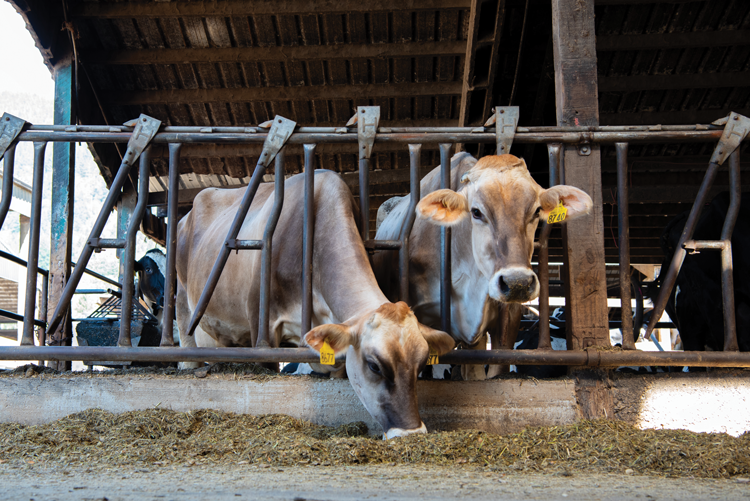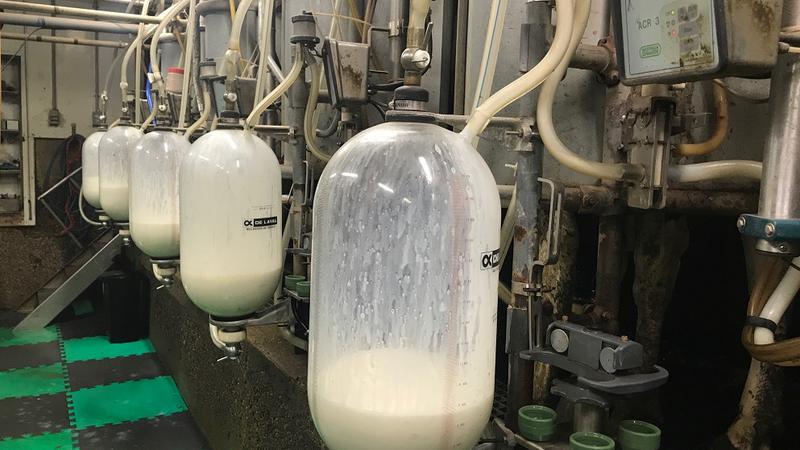I was thinking back and wondering if I had ever written about managing urine pH in close-up dry cows. I don’t think I have, so, here it goes. This topic could be more technical than my usual editorial style of writing; my goal is typically to keep things general enough to not need journal references at the end! Consider this attempt less of a science-based support of using anions to acidify rations, lower urine pH, and thus reduce risks of milk fever and more of a “how-to” on-farm guide to the mechanics of it all. Let’s focus more on logistics and less on biology, though a little biology will probably be necessary. We will use the term dietary cation-anion difference (DCAD) as a general moniker for the process of acidifying diets in the prefresh period to reduce the risk of milk fever.
Another goal in my writing is to be general enough to not offend other technicians that see or do things differently. I may cross that line here, but I do so knowing fully that there are usually several different ways to do things successfully in a biological system. Below, I will discuss the way that has served me well for more than three decades. As I am writing this, I recall a very enjoyable effort a few years ago where I collaborated with Iowa State’s Jesse Goff on an article that, though close to this topic, was more generally discussing successful transitions, and the only reference to DCAD diets was the question of if heifers needed them.
Helping calcium mobilization
Before we get into the weeds of implementing this strategy successfully on the dairy, I want to mention something I found interesting in the history of milk fever, or hypocalcemia, and how it was controlled in the past. This may require a touch of biology. In a gross oversimplification, milk fever happens because although the just-fresh cow has an abundance of calcium stores in its bones, the rapid rise in calcium needs upon the initiation of lactation overwhelms the cow’s system to getting the calcium out of the bones, into the blood, and into the milk.
This is the magic of the DCAD approach. Feeding a DCAD diet for a few weeks before calving causes a small but noticeable drip of calcium into the urine. Since the cow’s blood calcium level has a very narrow window of acceptability, it notices this small loss of calcium. After the cow calves and makes milk, the calcium pull from the blood will be dramatic and can quickly cause milk fever. However, this small loss due to the DCAD diet during the prefresh period is easily handled by the cow, and when it notices it, the cow has time to make some metabolic and hormonal changes to set up the system to easily get all the calcium needed from the bones.
And now the history. Before DCAD, I know of two ways that producers managed milk fever. First, they nearly starved the cow for calcium during the dry period, causing it to begin the process of bone calcium mobilization sooner. This could be effective, but low calcium diets are likely not good for the cow, and the overall effectiveness was questionable. I remember the saying “No milk fevers, no milk,” meaning that if producers used this approach to manage milk fever, the cows didn’t milk well after calving. So, living with a few milk fevers was accepted.
Stepping back a couple of generations reveals an even more interesting approach to managing milk fever. I learned about this reading James Herriot’s books in the series All Creatures Great and Small set in a veterinary practice in1930s northern England. The television series from this book series, seen in the U.S. on PBS, is highly recommended. While reading the books, not only do you learn about early tuberculosis and brucellosis testing and the introduction of antibiotics to farm animals, you also learn about the early attempts to treat, not control, milk fever. This sounds crazy, but vets relied on an air pump designed for bicycle tires. Upon being called out to treat a milk fever cow, the approach was to slow milk production while the cow adjusted its calcium metabolism. To accomplish this, the vet would insert the needle of the air pump into the teat end and literally pump the udder full of air to suppress milk flow for a few days.
A more modern approach
As we check urine pH, send samples to the lab, and modulate our DCAD supplements in 2024, we should be thankful that bicycle tire pumps are no longer in our arsenal! Here are a few bullet point ideas and guidelines for today:
- Check urine pH at least weekly.
- Be careful to not move up and down too quickly or in extremes on DCAD product inclusion to chase urine pH. Give it a few days or maybe two bad checks in a row before reacting.
- Work with your nutritionist, DCAD product supplier, and vet to decide on the urine pH goals.
- Consider using a pH meter instead of pH paper. If using paper, be sure the range fits. When I see results that have several 5.5s, I check to be sure that 5.5 isn’t the lowest number in the range for that particular paper. Try to check urine pH at the same time of the day, and avoid checking cows that have just been moved into the close-up pen. Likewise, cows that are within a few days of calving should be avoided.
- Send close-up ration samples to the lab monthly using wet chemistry for macrominerals.
- If available, feed as much corn silage to close-up cows as you can. The potassium variability and thus DCAD changes are fewer in pitted or piled corn silage compared to dry hay or bagged silage. Alfalfa, in particular, can vary widely in potassium, requiring near constant titration and changes in DCAD needs. When alfalfa or grass hay must be fed in higher quantities, testing lots and separating the ones with the lowest potassium is strongly advised.
- It is not uncommon for me to get questions about shortages of DCAD products. In these cases, it seems that while waiting for the next delivery, no harm is done from one day without DCAD and maybe even two days. However, the third day seems to be a problem. Just be sure to use something like a far-off dry cow or heifer mineral temporarily if the DCAD products are combined with the vitamin, mineral, and additive supply and replace intake as needed with protein or by-products.
- Lastly, here are two nontechnical ideas that can help all of this work. The first is to involve the feeders in urine pH testing. This may sound unusual, but if you think about risks in the process, the feeding logistics are a real concern. How do you know for sure the feeders put in the right bag or even the right amount of these small inclusion ingredients? When using bagged product, one idea is to set up a spike welded to a disc and have the feeders put the empty bags there each day to show they have been used. An approach like this or careful inventory tracking of DCAD ingredients is worth the effort.
Some say that the close-up ration is the most important ration on a dairy. Perhaps this is true. It is hard to get over a bad start to lactation, and transition cows have risks that need to be closely managed. Sending samples to the lab, checking urine pH, adjusting diets, segregating lots of hay, and other inconvenient tasks are truly necessary for this part of the dairy to perform well. Creating a team with everyone from the vet and nutritionist to the folks managing the transition cows and even the feeders will greatly improve the odds for success!










